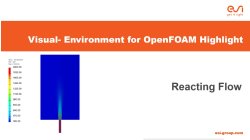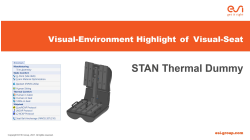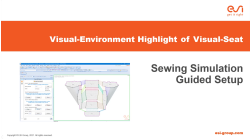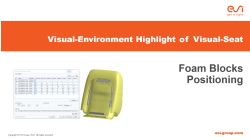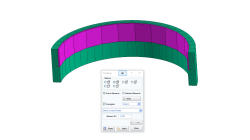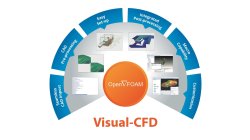- Home
- Resources
- Tips & Tricks
Tips & Tricks
Visual-Environment Highlight of Visual-CFD: Adjoint Optimisation
The adjoint method has long been considered as the tool of choice for gradient-based optimisation in computational fluid dynamics (CFD). The adjoint method, allows computation of sensitivities, i.e. the derivative of the objective function with respect to the design variables and later shape optimisation. The OpenFOAM supports the continuous adjoint method, it is faster and requires less memory than the discrete adjoint method. However, it requires fine meshes to get desired/optimal output. Visual-CFD makes it even simpler to define and calculate the sensitivities and optimisation with its ease-of-use functionality. Currently it is available for incompressible laminar and turbulent flows with objective functions of lift, drag, momentum for external flow and pressure loss for internal flows.
Raj Kumar
Barnawal
Virtual Integration Platform
Visual-Environment Highlight of Visual-CFD: Reacting Species
Modelling reactive systems is numerically expensive since the non-linear reaction kinetics leads to stiff-ODE systems in the species and energy conservation equations. Special solution algorithms, capable of handling these stiff systems of equations, different ODE solvers are supported for the same. Strategies to reduce the numerical effort to solve reactive flows include chemistry tabulation, which is also supported. A critical choice in simulating reactive flows is the combustion model, there are different combustion model has been supported which can be picked based on user’s choice. Enough intelligence has been put in Visual-CFD for user, while creating chemical reaction, in case reaction is not stoichiometrically balanced user will be warned for the same.
Raj Kumar
Barnawal
Virtual Integration Platform
Visual-Environment Highlight of Visual-Seat: STAN Thermal Dummy
STAN is a thermal dummy to test thermal comfort and moisture management characteristics of automobile, truck, and airplane seating. This device is commercialized by Thermetrics® and some relevant information can be found here: https://thermetrics.com/products/manikin/stan/. In collaboration with Thermetrics, ESI developed a numerical model of the STAN dummy for the prediction of its thermal behavior. No humidity is managed in this version of the model. A process for the setup of the seating and the thermal simulations of the STAN dummy have been added in this version.
Christian
Marca
Virtual Seat, Virtual Integration Platform
Visual-Environment Highlight of Visual-Seat: Sewing Simulation Guided Setup
Sewing simulations aim at assembling flat cover patterns and wrapping them around deformable foam block. This application exists in Visual-Seat for many versions as a set of toolboxes and functionalities enabling to set-up this type of input. This has been enhanced with a workflow gathering all tools and functionalities and proposing them in the right sequential order to provide some user guidance.
Christian
Marca
Virtual Seat, Virtual Integration Platform
Visual-Environment Highlight of Visual-Seat: Foam Blocks Positioning
When assembling the different components of the seat, it may happen that the foam at rest is intersecting the frame and/or the suspensions. In order to remove those intersections, a simulation-based technique had been implemented previously by applying surface pressure on foam. Upon customer request, a new method has been added where the frame (and suspensions) can be scaled down and moved initially to retrieve progressively their size and position during simulation, when the contact with foam is active.
Christian
Marca
Virtual Seat, Virtual Integration Platform
3D Combine
As existing 2D Combine in Visual-Mesh, 3D Combine has been introduced to undone refinements.
Sandrine
Dischert
Multiphysics, Virtual Integration Platform
New pattern in Visual-Mesh 3D split
The aim of this new 3D pattern is to allow users to refine mesh on a restricted area
Sandrine
Dischert
Multiphysics, Virtual Integration Platform
Crash when launching Visual on CentOS
On Linux, at moment of launching Visual-Environmnet, crash happens after having selected Visual Weld. It is possible to try following steps to solve the problem. - Launching Visual in debug mode - Downgrade GlibC to 2.12 - Install freshly NTP
Yonggang
Duan
Virtual Integration Platform, Welding & Assembly
Visual-CFD Frequently asked questions with solutions
This article collects several tips & tricks for Visual-CFD users
Sunil
Unaune
Virtual Integration Platform
Coupling windows for postreatment visualization
When comparison between results is needed, coupling windows and synchronizing animations is a key tool.
Sandrine
Dischert
Multiphysics, Welding & Assembly, Virtual Integration Platform
